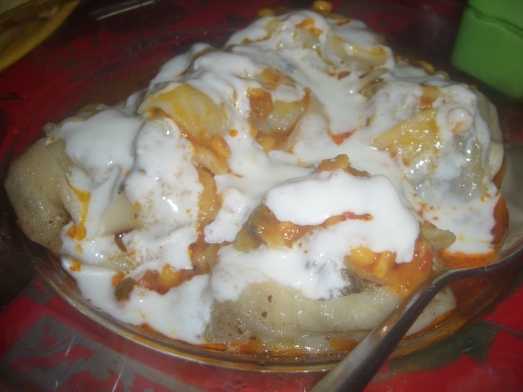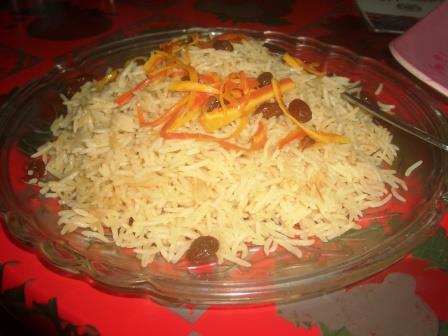For a long time Si has been suggesting us to visit Feroz Shah Kotla Mosque for a rendezvous with the city’s jinns. Si and Sa sent out an email regarding this and the mail said “Carry Sheets of paper to write your Arzi”. Some of us struggling with writing, in search of a job, or in the finishing line of thesis submission took this task seriously and geared up for a rendezvous with city’s jinns with our arzis.
Who is a Jinn?
“The majority of Muslims believe jinn to be a species of spiritual beings created by God out of smokeless fire long before he created humans out of mud and to whom he gave the earth to inhabit. They are drawn to both good and evil. In this regard they are different from angels who were created out of pure light and are incapable of evil and are, therefore, given the heavens to inhabit” .
(Hughes n.d.; entry under Djinn in Encyclopedia of Islam 2003 in N. Khan. 2006. “Of Children and Jinn: An Inquiry into an Unexpected Friendship during Uncertain Times”. Cultural Anthropology 21(2): 234-264.
The city’s jinns are invoked, and called upon to help people across faiths on thursday (after 2pm) in Feroz Shah Kotla . Emperor Firoz Shah Tughlaq built this citadel in the fifth city- Firozabad in 1354. Jinns are believed to reside in the ruins of this fort and. Every thursday thousands of people gather in the city’s ruins to offer their prayers. As you enter Feroz Shah Kotla you will be greeted with people selling incense sticks, candles, sugar candies, flowers, etc to offer to the jinns. The city’s jinns love sweets so people carry sweets and offer and distribute jalebis as well.
What was most interesting are the letters or arzis people write and paste it on walls. This practice as one of the bloggers reveal is not that old. It came into practice in 1970 with a “fakir named Laddoo Shah came and started living in these ruins at the end of the Emergency of 1975-77, a year after the demolitions at the nearby Turkman Gate locality, which had once been part of Firozabad” 1. Every nook and corners of the ruins and particularly cave like structures are filled with the smoke of incense stick, candle light and letters written to city’s jinns. Unlike other days, a Thursday visit to these ruins is recommended as the jinns bring back this 14th C place back to life with people fighting over food being distributed, an absolute stranger sharing a jalebi with one of our friends and handis of biryani being distributed. Jamie Masjid, Baoli and the cave like structures along the staircase to the Ashokan Pillar that was brought to this place along with the structure in Northern Ridge area are taken over by people offering their prayers. Several dos and don’ts apply.
After the afternoon walk you will feel hungry so get an auto/ bus to take you to Old Delhi and this time Sa had promised to take us to an Afghan eating joint in Ballimaran. As we made our way through the by-lanes of Chawri Bazaar, and made our way to Ballimaran we were tired. We were a group of 11 souls, so we got into two e-rickshaws for our trek to this Afghan food joint. Some of us reached a little early and I vaguely recalled Rahul Verma’s article on this Afghani place. And to my relief I was not wrong. He did write about this place!2 Though prices have increased from what he mentions in the article we did miss out on a spinach dish he had recommended. This place tucked away in the maze of staircases and series of workshops ranging from embroidery to laces and even jewellery was a pleasant surprise.
The place is a regular for Afghan traders and when we entered it was empty except the man behind the cash counter and a waiter whom we bothered a lot! It is indeed difficult to deal with 11 hungry souls. Sa in anticipation of our appetite had ordered a plat of mutton and chicken kebabs. The mutton kebabs were excellent as it not coated in spices and yet tenderly cooked. We ordered some rotis to enjoy with our kebabs. The Chicken kebabs coated in some red spice were a let-down. It was time to take a brief tour of the Menu and there was Mantoo peeping from the list of the delicacies. When we asked the waiter he suggested we try it because “ it is different from what you get in the market”. And indeed I fell in love with Mantu.
It does not take much of a coaxing when it comes to ordering a plate of dumplings and each region across Asia has their own version of dumplings. Afghan Manto/ Mantu “dates back to the time of Turkic and Mongol horsemen of Central Asia. It is believed that the horseman carried frozen mantu during the cold winters while traveling long distances and boiled them over camp fires for supper”3. Mantu is the perfect example of how foods acquire new names when it comes into contact with new culture. Various versions of Mantoo/ Manti/ Mantu exist across Turkish, Armenian, Azerbaijani, Kazakh, Kyrgyz, and Afghan cuisine as well.
The Afghani version of Mantu is a steamed dumpling with a filling of minced beef/ lamb cooked in spices and onions and served yoghut and topped with yellow split peas based sauce cooked with onions and tomatoes and finally finished with some dried crushed mint. Apart from Mantoo, you can try out Shurba and Paloo ( a rice based dish served with lentil cooked with mutton chunks).
I am definintely gearing up to go back to have a plateful of Mantu !
For all those who want to explore this place here’s the address
Afghani Restaurant
2nd Floor Sharif Manzil, Dil Araam Market, Ballimaran, Delhi-6.
Please call 9999228938, 9958822659 for directions
P.S. After my trail I found this video on Making Mantoo
http://www.youtube.com/watch?v=QlOY71lgJms
Another interesting blog post on the vegetarian version Aushak. Check this post http://morethanjustcurry.wordpress.com/2013/01/31/aushak-afghan-leek-dumplings-with-yogurt-sauce/
Notes and References
1 Kunika. 2011. “Djinns of Feroz Shah Kotla: Discovering Kotla” in http://nomadicrider.com/2011/01/djinns-of-feroz-shah-kotla-discovering-delhi/; Accessed on 22 November 2013.
2 Rahul Verma. 2008. “Kabuliwallah! Once more”. The Hindu 7 January 2008.http://www.thehindu.com/todays-paper/tp-features/tp-metroplus/kabuliwallah-once-more/article1405768.ece; Accessed on 22 November 2013.
3 For details see http://travelafghanistan.hubpages.com/hub/Mantu-Recipe-Afghan-Beef-Dumplings; Accessed on 22 November 2013.
Happy cooking and happy eating !
©itiriti




